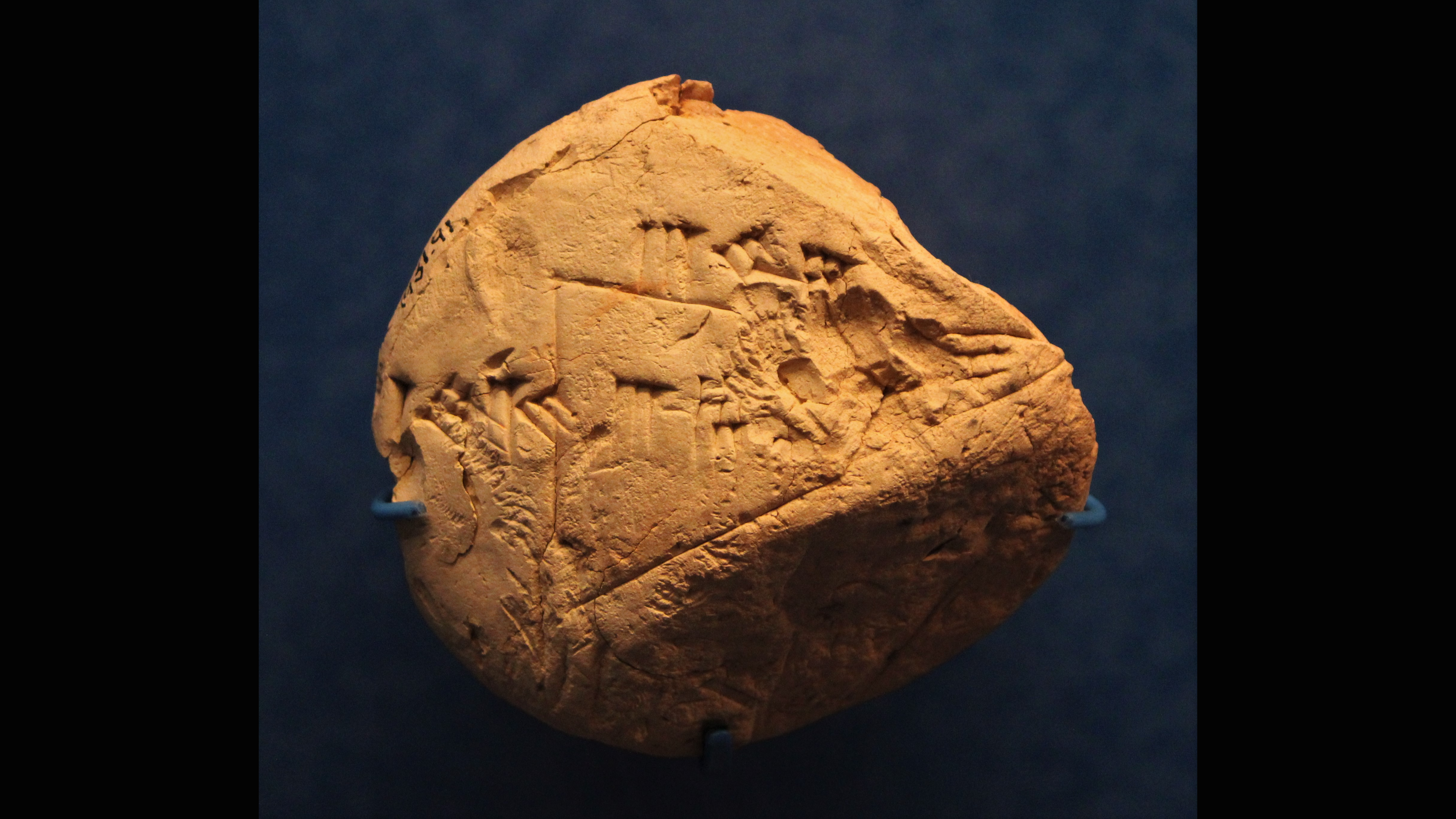
Name: Babylonian geometry homework
What it is: A cuneiform mathematical clay tablet with an incorrect answer
Where it is from: Tell Ingharra, Kish (Sumer), modern-day Iraq
When it was made: Old Babylonian period, between 1900 and 1600 B.C.
Related: Mask of Xiuhtecuhtli: A 600-year-old mask of the Aztec fire god taken as treasure by conquistadors
What it tells us about the past:
This round clay tablet, which is in the collection of the Ashmolean Museum at the University of Oxford, is one of two dozen examples of ancient Babylonian mathematics homework found at the archaeological site of Kish in 1931.
However, the student who used this tablet as a "scratch pad" to calculate the area of a triangle made a key mistake, and their error has been preserved for nearly 4,000 years.
The tiny tablet is just 3.2 inches (8.2 centimeters) in diameter and depicts a right triangle with three sets of cuneiform style numbers — one set along each of the two sides representing the length and height of the triangle, and one in the middle for its area.
Along the top line (height) of the triangle, the student has written 3.75, while the vertical line (base) is indicated as 1.875. These values mean the area of the triangle should be 3.5156. The student, though, has incorrectly calculated it as 3.1468.
Several of these ancient scratch pads have been found at Kish and nearby Babylon, both of which were major areas of early mathematics education. While this particular tablet is blank on the back, other examples include a teacher's composition on one side and the student's on the other.
The rise of mathematics education in ancient Babylon corresponded to the time when large empires began to develop. Higher math techniques like algebra and geometry were likely invented around 3000 B.C. in Sumer as the growing civilization needed ways to calculate taxes, tally up trade and commerce and establish calendars.
Babylonian mathematics had a base 60 number system, which we still use today to tell time — 60 seconds in a minute, 60 minutes in an hour. And these ancient people understood the Pythagorean theorem more than a millennium before the ancient Greek philosopher Pythagoras became famous for establishing that the sum of the squares of two sides of a right triangle equals the square of the hypotenuse.
So this student's messed-up math actually shows an important cultural development: The way people accumulated and passed on knowledge was switching from memorization to written information. This switch — which began around 3500 B.C. in Kish — was so dramatic that it is sometimes compared to the switch from paper to digital recordkeeping in the 20th century.




!["[T]he First and Fifth Amendments Require ICE to Provide Information About the Whereabouts of a Detained Person"](https://images.inkl.com/s3/publisher/cover/212/reason-cover.png?w=600)


